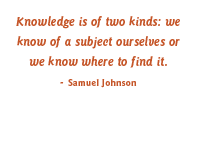| People |
| Philosophy |

 |
|
|
|
 |
<< GO BACK Strategic Thinking
Download/Print: I’m not a big fan of strategic planning. What I am a big fan of is strategic thinking. Too often, strategic planning plays out as a painful process of canned exercises and platitudes that get translated into a 64 page document that then gets put on a shelf and never looked at again. No wonder powerful women shudder and strong men weep when they hear their executive director say “it’s time for strategic planning.” Strategic thinking, on the other hand, is something leaders of nonprofits should be doing all the time. Big picture goals may not change rapidly, but strategies should be constantly examined to determine if they’re working or if they continue to be appropriate, based on changes in the external environment. Imagine that you created a strategic plan in June of 2008, just before the worst of the Great Recession hit. If you were still making decisions for your organization in December of 2008 based on those strategies, you might be out of business today. To be sure, elements of traditional strategic planning theory are indispensible: articulating a clear and compelling vision and mission, along with statements of core values, provides an essential framework and filters for decision making. But fostering a culture of strategic thinking will leverage that foundational work much more effectively than an annual strategic planning day. Picture strategic thinking as a Venn diagram (see below), with three sets of considerations. • What you do as an organization – your purpose, focus, skills • What the needs are in the community • The resources you have available All of these areas are in constant flux – our capabilities, understanding, and skills evolve, community needs grow and ebb, and resources available (time, money, support) can certainly change overnight. Strategic thinking means staying focused in the confluence of these three areas to figure out how to make the greatest mission impact. That’s not something that can wait twelve months for your next planning session. It requires nonprofit leaders who can:
In spite of the challenges and pressures of leading and managing a nonprofit organization in difficult economic environments, every board meeting should include a 20-30 minute strategic level discussion. After all, that’s one of the main purposes of a board of directors – to provide guidance and insights for the organization’s direction and success.
______________________________________________________________ NewLevel Group, LLC, works with social impact organizations and their leaders to advance missions that benefit people, planet, and profits. John Heymann can be reached by at (707) 255-5555 x 105 or jheymann@newlevelgroup.com. |
||
 |
 |
 |